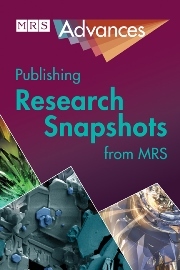No CrossRef data available.
Article contents
Characterization of a Porous Carbon Material Functionalized withCobalt-Oxide/Cobalt Core-Shell Nanoparticles for Lithium Ion BatteryElectrodes
Published online by Cambridge University Press: 15 April 2016
Abstract
A nanoporous carbon (C) material, functionalized with Cobalt-Oxide/Cobalt(CoO/Co) core-shell nanoparticles (NPs), was structurally and chemicallycharacterized with transmission electron microcopy (TEM) while itselectrochemical response for Lithium ion battery (LIB) applications wasevaluated as well. The results herein show that the nanoporous C material wasuniformly functionalized with the CoO/Co core-shell NPs. Further the NPs werecrystalline with fcc-type lattice on the Co2+ oxide shelland hcp-type core of metallic Co0. The electrochemical study wascarried out by using galvanostatic charge/discharge cycling at a current densityof 1000 mA g−1. The potential of this hybrid material forLIB applications was confirmed and it is attributed to the successful dispersionof the Co2+/ Co0 NPs in the C support.
Keywords
Information
- Type
- Articles
- Information
- Copyright
- Copyright © Materials Research Society 2016

